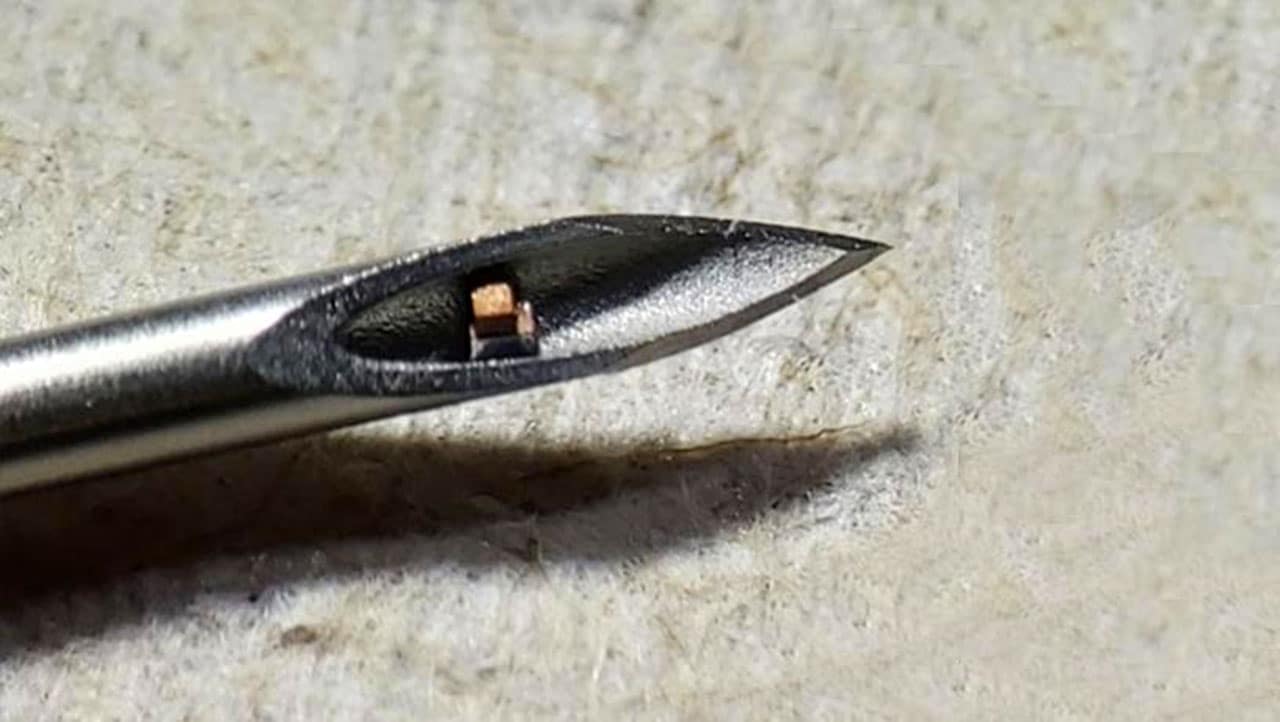
Putting electronics in our body so that it circulates together with the red blood cells to monitor and map biological signals, support and enhance physiological functions, and treat diseases is something increasingly desirable in the world of medicine. Implantable medical devices are transforming healthcare and improving the quality of life for millions of people.
Now, researchers at Columbia Engineering have built what they say is the world’s smallest single-chip system that is a complete functioning electronic circuit with a total volume of less than 0.1 cubic millimeters. The system is as small as a dust mite and visible only under a microscope.
In order to achieve this, the team used ultrasound to both power and communicate with the device wirelessly. The tiny new chip can be implanted via a hypodermic needle to measure internal body temperature, blood pressure, glucose, and potentially much more.
Typically, small electronics feature radio frequency (RF) modules for transmitting and receiving electromagnetic signals, but these wavelengths are too large to be used with such a small device. Ultrasonic wavelengths, on the other hand, are much smaller at a given frequency because the speed of sound is so much less than the speed of light. That’s why the team has included a piezoelectric transducer that acts as an “antenna” to communicate and power with the device wirelessly using ultrasound waves.
When combined with a low-power temperature sensor to transform the chip into a real-time temperature probe, the device will be able to monitor body temperature in addition to small variations in temperature linked to the therapeutic use of ultrasound. This should be revolutionary for developing wireless, miniaturized implantable medical devices that can sense different things, be used in clinical applications, and eventually approved for human use.
“This is a nice example of ‘more than Moore’ technology – we introduced new materials onto standard complementary metal-oxide-semiconductor to provide new function,” said the team leader Ken Shepard. “In this case, we added piezoelectric materials directly onto the integrated circuit to transducer acoustic energy to electrical energy.“
“Ultrasound is continuing to grow in clinical importance as new tools and techniques become available. This work continues this trend,” added a team member Elisa Konofagou.
At the moment, the implant’s proof-of-concept was demonstrated on live mice, where it was used for ultrasound neurostimulation. In the experiment, they implanted up to seven mice at once with intramuscular injection via syringe.
The team’s goal is to develop chips that can be injected into the body with a hypodermic needle and then communicate back out of the body using ultrasound, providing information about something they measure locally. The current devices measure body temperature, but there are many more possibilities the team is working on.
RELATED ARTICLES
- Swedish study says Children who catch a Cold without Vaccines develop Natural Immunity
- Countries with Older Populations Have the Most Coronavirus Deaths
- Stanford study: COVID-19 much more widespread than thought, and NO MORE DEADLY THAN FLU
- Scientists Fear That 'Zombie Deer Disease' Could Spread To Humans
- Experts Predict Mind-Controlled Devices May Be Common By 2040s











